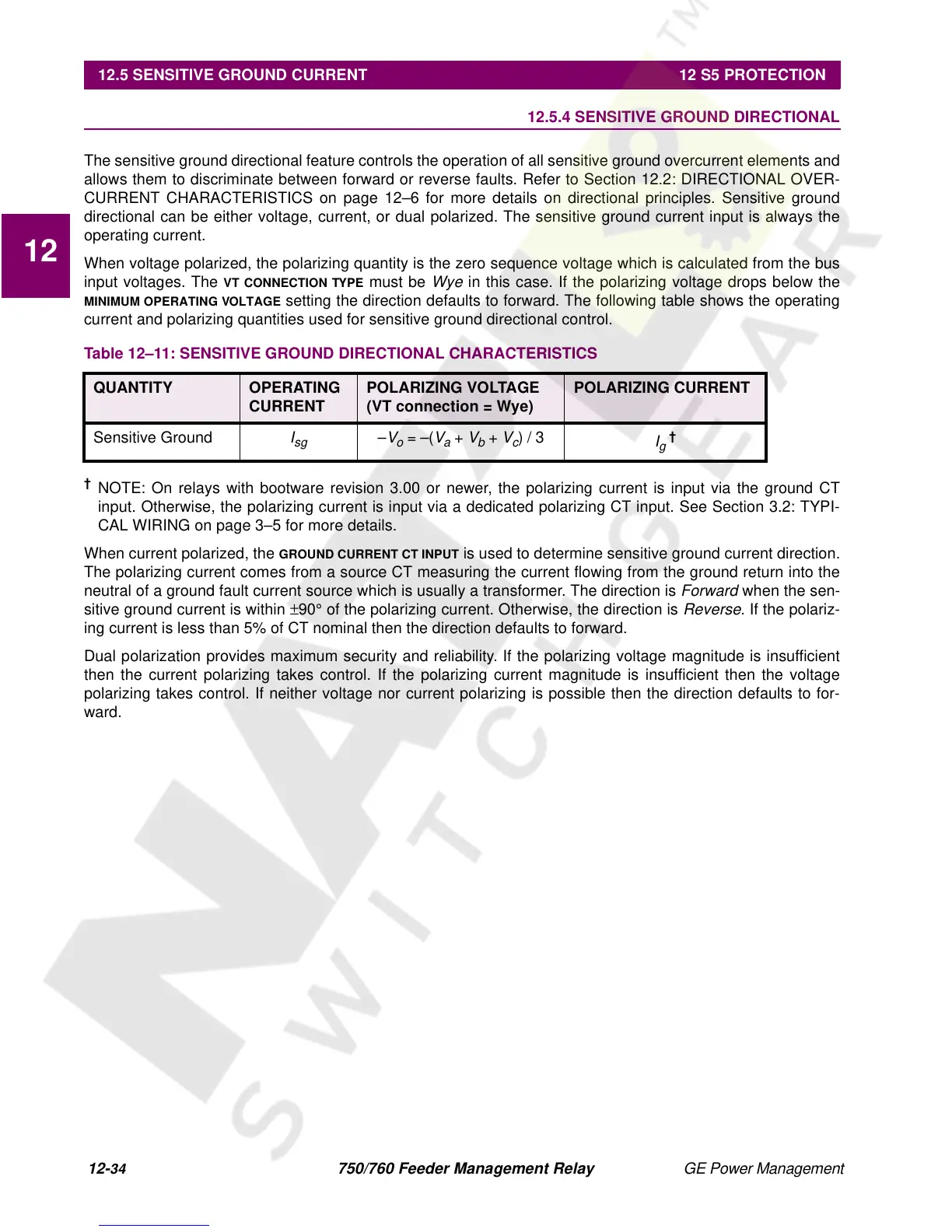12-
34
750/760 Feeder Management Relay GE Power Management
12.5 SENSITIVE GROUND CURRENT 12 S5 PROTECTION
12
12.5.4 SENSITIVE GROUND DIRECTIONAL
The sensitive ground directional feature controls the operation of all sensitive ground overcurrent elements and
allows them to discriminate between forward or reverse faults. Refer to Section 12.2: DIRECTIONAL OVER-
CURRENT CHARACTERISTICS on page 12–6 for more details on directional principles. Sensitive ground
directional can be either voltage, current, or dual polarized. The sensitive ground current input is always the
operating current.
When voltage polarized, the polarizing quantity is the zero sequence voltage which is calculated from the bus
input voltages. The
VT CONNECTION TYPE
must be
Wye
in this case. If the polarizing voltage drops below the
MINIMUM OPERATING VOLTAGE
setting the direction defaults to forward. The following table shows the operating
current and polarizing quantities used for sensitive ground directional control.
†
NOTE: On relays with bootware revision 3.00 or newer, the polarizing current is input via the ground CT
input. Otherwise, the polarizing current is input via a dedicated polarizing CT input. See Section 3.2: TYPI-
CAL WIRING on page 3–5 for more details.
When current polarized, the
GROUND CURRENT CT INPUT
is used to determine sensitive ground current direction.
The polarizing current comes from a source CT measuring the current flowing from the ground return into the
neutral of a ground fault current source which is usually a transformer. The direction is
Forward
when the sen-
sitive ground current is within
±
90
°
of the polarizing current. Otherwise, the direction is
Reverse
. If the polariz-
ing current is less than 5% of CT nominal then the direction defaults to forward.
Dual polarization provides maximum security and reliability. If the polarizing voltage magnitude is insufficient
then the current polarizing takes control. If the polarizing current magnitude is insufficient then the voltage
polarizing takes control. If neither voltage nor current polarizing is possible then the direction defaults to for-
ward.
Table 12–11: SENSITIVE GROUND DIRECTIONAL CHARACTERISTICS
QUANTITY OPERATING
CURRENT
POLARIZING VOLTAGE
(VT connection = Wye)
POLARIZING CURRENT
Sensitive Ground
I
sg
–
V
o
= –(
V
a
+
V
b
+
V
c
) / 3
I
g
†
